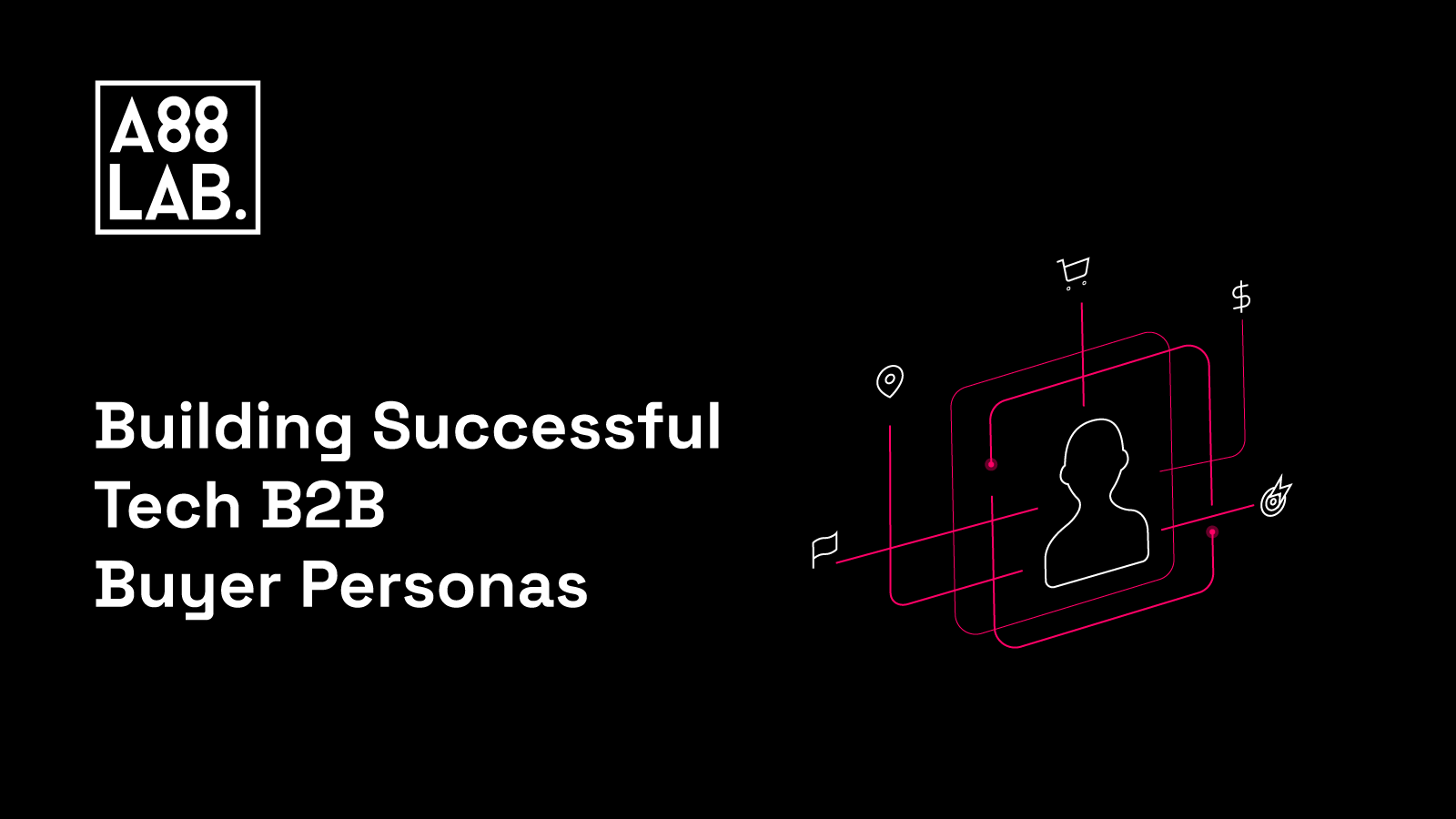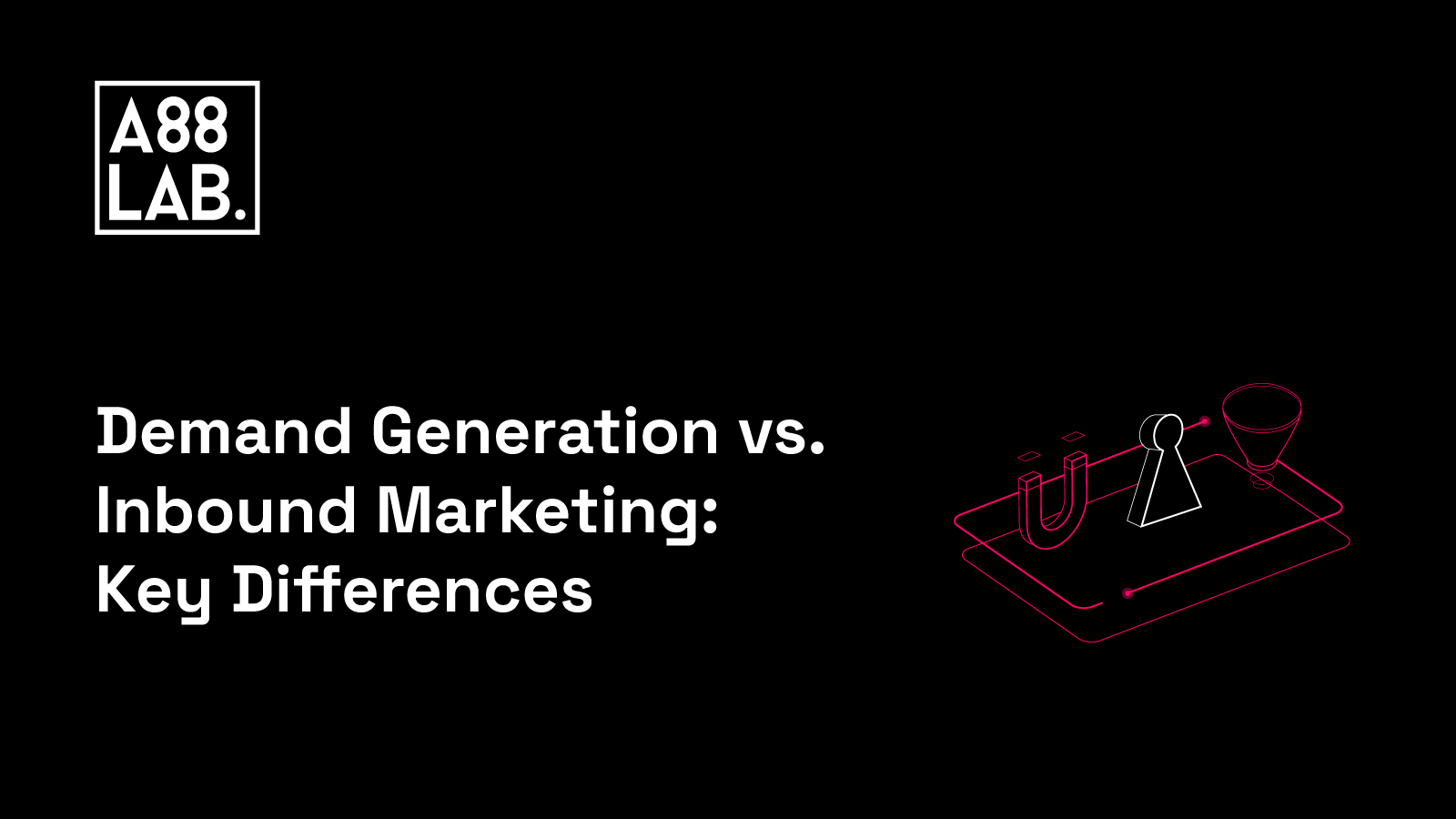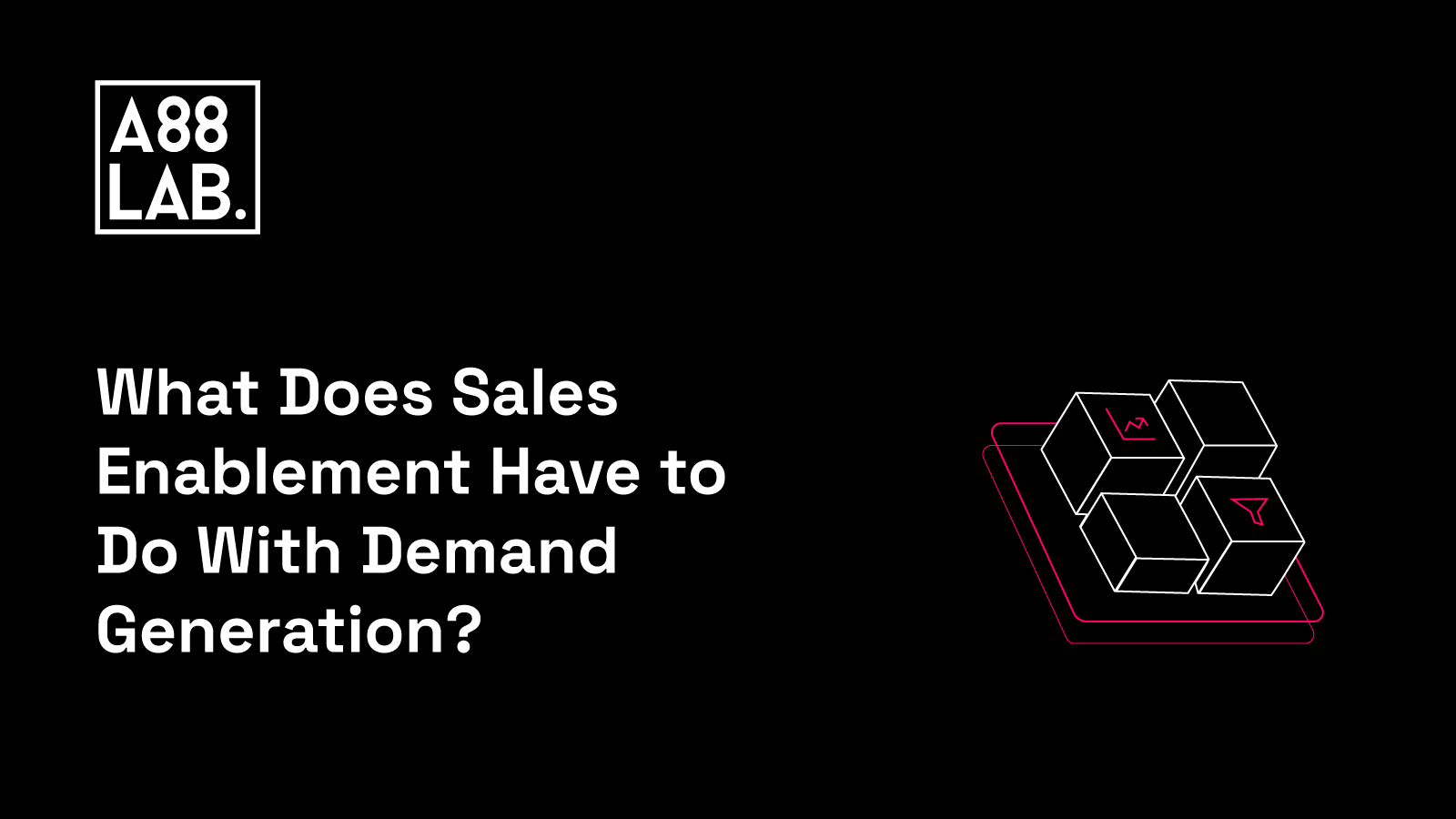B2B tech buyer personas are part of your vision for the ideal business profiles you want to help succeed based on data and research. They include potential customers you want to focus on attracting, winning, and retaining. They also involve current customers who match your requirements for a beneficial partnership.
Think about your current customers as your business partners. Who are the business partners bringing you the highest revenue? How does your tech solution help them succeed? Which business partners are easier to work with?
Buyer personas are part of the inbound marketing strategy, which is one of the best ways to form long-lasting business relationships. You can start by developing your B2B tech buyer personas. Focus on solving the challenges they have and the goals they want to achieve. Choosing the right partners leads to positive results for both businesses.
The Importance of B2B Buyer Personas
According to Salesforce, 76% of customers expect consistent interactions across departments, yet 54% say it generally feels like sales, service, and marketing teams don't share information.
Developing buyer personas is a joint responsibility of the marketing and sales departments. The customer service department can also share their insights to determine the information you'll include in the profile. When all customer-facing teams share their insights and define the ideal customer, they go in the same direction and work on achieving shared business goals.
What Are the Benefits of Defining a B2B Buyer Persona?
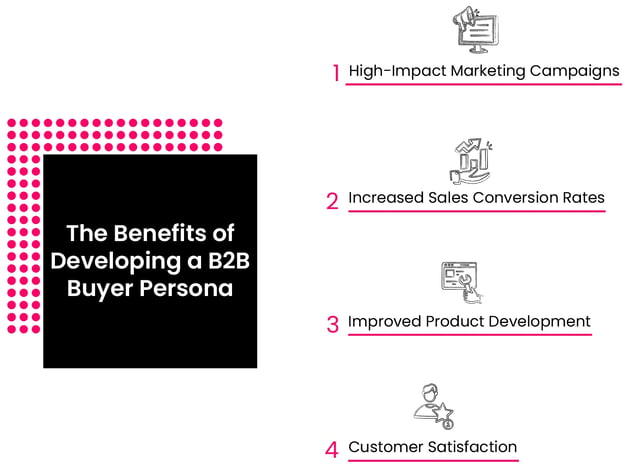
Buyer personas can have a broader business application as a semi-fictional representation of your ideal customers. When you position your customers at the center of your business and create a comprehensive profile of your buyer persona, marketing, sales, customer service, and product development teams can better understand your ideal customer and achieve your business goals.
High-impact marketing campaigns
The marketing team can use the insights to focus your marketing efforts on defining, attracting, and segmenting audiences to deliver a more personalized experience for each buyer persona. Creating a negative buyer persona can also provide insights into the audiences you should exclude from your target audience.
Buyer personas can help you implement successful marketing campaigns with the right tone of voice, the appropriate format published at the right time, and delivered through the right channel. They also help you align within your organization to focus on generating demand, attracting high-value visitors to your website, converting qualified leads into customers, and retaining them.
Increased sales conversion rates
The sales professionals can get involved in the buying process of prospects highly qualified by the marketing team that has progressed in their buying journey. Equipped with information about customers' motivations, beliefs, and personality traits, they can recognize their unique pain points in the sales conversations and address them more efficiently.
Customer satisfaction
According to HubSpot, time to value is the amount of time it takes for your customers to see the value of your products or services. The lower the time, the more successful your customers are and the more likely they will repeat their purchase. When sales and customer success aligned and clearly understand the customer journey, customers can succeed with your products or services. Happy customers - happy teams - more revenue.
Improved product development
Buyer personas provide guidelines for the product development team to build product features better aligned with your ideal customers' demands. This way, your products, and services will grow, and you'll be more likely to keep customers for the long run.
How to Create B2B Buyer Personas Beyond the Basics
Creating B2B personas that truly represent your target audience is a key ingredient for any B2B marketing success. Sometimes, companies think they already know who their buyers are and skip the research and analysis. Unfortunately, this can lead to inaccurate buyer personas that negatively impact your marketing and sales efforts. To avoid this, it's important to build personas based on solid research and data. With effective research on how to create buyer personas that accurately reflect your audience and help you develop a successful marketing strategy.
Use Your Current Database
When creating a tech B2B buyer persona, it's important to back it up with research and data. Using your current database is an excellent place to start, even if it's small! Your engaged prospects and customers can provide valuable insights into the key characteristics of your ideal target audience. For larger databases, segmenting it into smaller groups, such as by industry and analyzing other factors like job title and company size, can help identify similarities between customers that would have otherwise gone unnoticed.
This approach deepens your understanding of your current customer base and provides more details to enhance your buyer personas. Remember, a well-researched B2B buyer persona is a powerful tool that can significantly impact your marketing strategy and lead to increased business success!
Conduct mMake Interviews with Clients, Prospects and Lost Deals
When it comes to tech companies, chatting with current clients, potential buyers, and lost deals can be incredibly valuable in shaping buyer personas. Simple, direct questions during these chats can reveal important details about buyers' needs and pain points, which can inform future marketing and sales efforts.
It is very useful to inquire about clients' experiences with current projects. By asking questions like "What features do you like most about our platform?" and "What could we do to improve our platform?", we gain valuable insights that can be used to optimize our marketing strategies and sales.
When dealing with potential buyers, it's vital to understand their pain points and goals regarding specific products. Questions like "How did you like the onboarding process?" and "What criteria are you looking for in a product supplier?" can help identify key elements of buyer personas.
Even lost deals can provide valuable information for tech companies. While these conversations may be difficult, understanding why an organization chose not to use our tech offering can help strengthen buyer personas and improve future marketing and sales efforts.
Update Website Forms to Get More and Better Data
When creating B2B buyer personas, it's important to consider updating your website forms to collect more and better data. Your website may already have forms that collect important information, but by adding extra fields to gather details such as the industry, challenges, and decision making role of your buyers, you can get a better picture of your audience.
Although some visitors may be hesitant to fill out longer forms, those who do show a greater level of interest in your company or product. Gathering more information can help you refine your B2B buyer personas and improve your marketing efforts for your tech business.
6 Questions to Help You Define Your B2B Buyer Persona
Considering the difficulty of building long-term business relationships, you should carefully decide what kind of customers you want to help succeed.
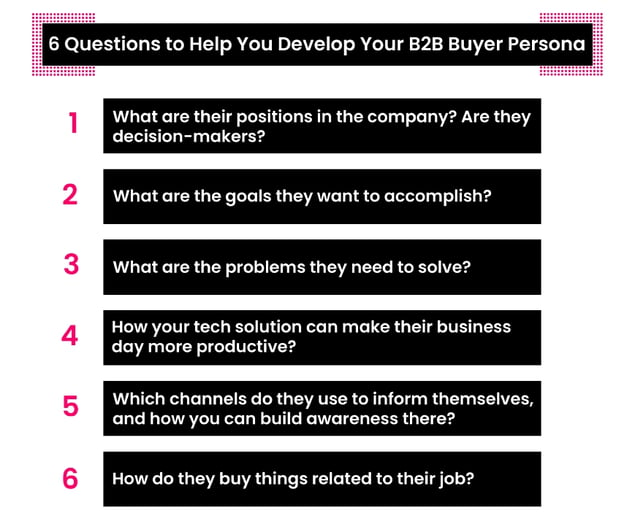
Getting answers to these six questions is the starting point for better understanding your buyer personas. You can figure out the answers by researching and interviewing current customers.
3 Types of B2B Buyer Personas
When it comes to making big B2B tech purchases it’s not as simple as putting a product in your cart. You’re working with thousands and sometimes even millions of dollars of purchase so the purchasing process is a lot more complex. Marketing and sales teams often underestimate this. Before you come up to that final step of selling your products there are various strategies you need to implement that will build your brand awareness including different types of demand generation strategies like: content marketing, inbound marketing, etc.
To successfully position these strategies and develop them in a way that will bring results to your tech company, it's important to know how to create B2B buyer personas according to your audience and its demographics, ranging from C-level decision-makers to technical users.
Although your audience could consist of numerous individual roles, they all fall into one of these three major B2B personas categories:
1. Decision Makers
The first category of the tech B2B buyer persona is decision makers. No matter which acronyms are in their title — CTO, CIO, CISO, VP, etc., don’t waste their time by explaining each of your solutions in detail. These individuals are always busy so make sure you get straight to the point. Make it easy for them to understand the benefits of your solution and verify that it's a good fit for their organization. To cater to this group, create relatable content and CTAs in your "Who We Are" and "What We Do" pages.
2. Recommenders (Influencers)
Narrowing down the shortlist of products being evaluated is a task that falls to the second group of the B2B buyer persona - the recommenders or influencers (not TikTok or Instagram influencers though). The recommenders are typically the Directors or Senior Managers of any SaaS company, IT, Information Security, Cyber Security, etc. To make sure that they have access to the most relevant content and CTA, you should provide them with ROI calculators, support pages, customer success stories, competitive comparison charts, and in-depth articles and blog posts.
3. Users
The third and final B2B persona category to consider are the users, who usually occupy roles such as engineer, analyst, developer, support engineer, technical consultant, and project manager. These individuals delve into the characteristics of your products and solutions to understand how they work. You need to make sure that your product detail pages, whitepapers, and case studies cater to their needs and questions. You're here to help them solve problems, so always keep their needs in mind!
When it comes to knowing how to create B2B buyer personas for tech companies, understanding your target audience is just as important as it is for any other industry. In fact, it may be even more critical for B2B tech, where decision-making processes can be complex and involve multiple stakeholders. To create accurate buyer personas for B2B tech, it's important to use proper B2B buyer persona templates that focus specifically on the challenges and pain points that target businesses in this industry face.
10 Steps to Create a Buyer Persona
You can create one buyer persona or more, depending on your business's needs. Usually, companies have 2-5. Here are 10 steps that will provide you with the insights you need to develop your buyer persona:
-
Analyze data about your existing customers
-
Do interviews with current customers to gain an accurate and deep understanding of their challenges, goals, and buying behavior.
-
Identify the problems that your tech products can solve.
-
Research the market and identify people who currently face these problems.
-
Find out what they want to achieve.
-
Identify customer buying behavior.
-
Define your target audience.
-
Create your buyer personas profiles.
-
Apply segmentation and personalization.
-
Make educated guesses on attracting them with the appropriate messaging at the proper time.
B2B Buyer Persona Characteristics
Employee's profile:
-
Name
-
Age
-
Location
-
Education level
-
Income level
-
Job title
-
Role and responsibilities (KPIs, budget, and whether they're decision-makers)
-
Skills
-
Challenges to overcome
-
Goals to achieve
-
Success factors (how does your solution help this person succeed?)
-
Role in the buying process
-
Buying preferences
-
Personality traits
-
Main triggers and motivators for their decision-making
-
Social media accounts (LinkedIn, Twitter, Facebook, Instagram, etc.)
-
Social behavior
-
Interests (industry thought leaders they follow, community groups they join, posts/topics they engage with, dark social, etc.)
Company's profile:
-
Industry
-
Number of employees
-
Specialties
-
Revenue
-
Company's goals
-
Applied technology
Position Your Tech for Success: 2 Key B2B Buyer Persona Templates
There are two types of B2B buyer persona templates you can use when creating your buyer personas that can help you understand your audience needs and preferences.
1. Traditional B2B Buyer Persona Templates
The traditional B2B buyer persona templates for tech businesses include fields related to the business itself, such as type of industry, company size, and decision-making hierarchy. Using this template will give you a better understanding of the specific challenges and goals that your target audience is facing, and help you tailor your approach accordingly.
You can also dive deeper into factors such as the personas experience with different tech solutions and their budget and purchasing process.
2. Solution-Oriented B2B Buyer Persona Templates
The solution-oriented tech buyer persona templates are highly effective for any tech. By focusing on how your company can directly serve this persona to overcome their challenges, you can create a more targeted and effective marketing strategy.
This template encourages you to consider not just the personas professional needs, but also their company's goals and priorities. By understanding the big picture, you can position your product or service as a valuable solution.
No matter which template you use, creating accurate and detailed B2B tech buyer personas is crucial for success in this competitive industry. With a deep understanding of your target audience and their specific needs, you can build stronger relationships with your customers and drive more business success
Conclusion
Developing buyer personas is a never-ending process. With a growth mindset, over time, you'll learn more about them and update their profiles.
The more you understand your business partners, the better you'll satisfy their needs, wants, and interests. As a result, your long-lasting business relationships will positively impact your brand's name and revenue.
Want to learn more about inbound marketing? Go to our blog and find some insightful tips to help your business grow!
.png)
